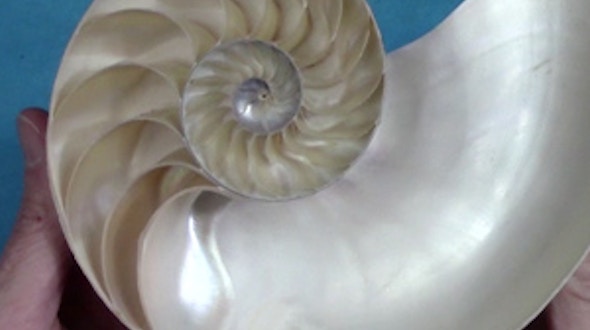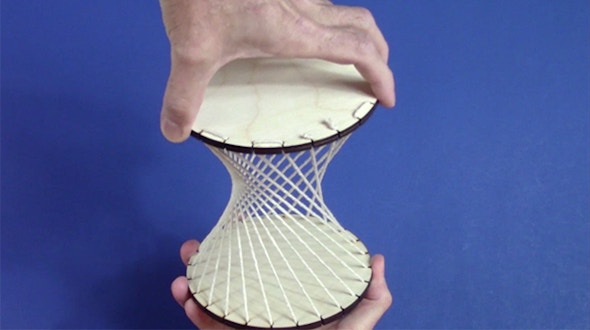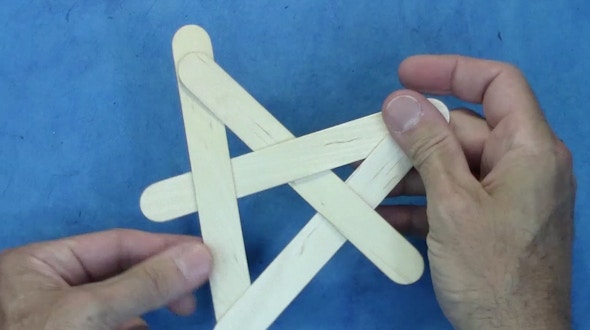Mathematical Impressions: Symmetric Structures
Mathematicians classify objects by their symmetries. If you turn a five-armed starfish a fifth of a revolution, it looks unchanged, so it has a five-fold rotational symmetry axis. Objects like a soccer ball, which has five-fold rotation axes (through the black pentagons) and three-fold rotation axes (through the white hexagons), are said to have “icosahedral symmetry.” The arrangement of rotations which leave the objects looking unchanged is the same as that of a regular icosahedron.
It is an unexplained fact that objects with icosahedral symmetry occur in nature only at microscopic scales. Examples include quasicrystals, many viruses, the carbon-60 molecule, and some beautiful protozoa in the radiolarian family. Luckily, we humans can make our own human-scale examples, so everyone can see and appreciate this lovely symmetry group. However, nature’s radiolarian examples are the most stunning instances of icosahedral symmetry and well worth a careful look.
Credits:
Radiolarian images from Ernst Haeckel’s “Art Forms in Nature,” 1899–1904.
Quasicrystal images from Wikipedia and Stanford University.
Virus images from Virusworld.
Related:
More videos from the Mathematical Impressions series.


